Just about everyone loves the taste of fresh vegetables and herbs. And there is no better way to get fresh vegetables and herbs than to grow them yourself. Even if you don’t have acres of land, it’s still possible. Check out these suggestions for DIY Container Gardening Tips!
A variety of veggies are perfect for DIY container gardening. Many gardening staples, such as tomatoes, peppers, bush beans, eggplant, green onions, cucumbers, zucchini, radishes, lettuce, and herbs can be successfully grown in containers.
When gardening space is limited, growing your own vegetables can be a challenge, but not impossible. For those with a small yard or who live in apartments, a traditional vegetable garden may not be possible. That’s where DIY container gardening comes in.
While it can be enjoyable and rewarding, container gardening does present its own unique challenges.
DIY Container Gardening Ideas
Choosing the Container For Your Vegetables and Herbs
The first thing to decide is what kind of container to use. A trip to any large garden center will show a wide variety of containers to choose from. They will probably be made of either plastic, fabric, ceramic, clay, or wood.
Ceramic and clay containers look nice but tend to be more expensive and will expand and contract with temperature changes, possibly causing them to crack over time.
Wood containers will deteriorate from the inside out as they are exposed to constant moisture.
Plastic containers don’t look as nice as wood or ceramic but are lighter and more durable.
One of the more affordable options for planting vegetables in containers is a fabric planter like this one. Fabric planters are often sold with handles which makes them easier to move around and also allows more flexibility for the root systems of your plants.
When choosing the container, keep in mind any of these types will be more than adequate for a few seasons, but if you want something simple and relatively cheap, fabric may be your best bet.
Size Does Matter
As a general rule, bigger is better when it comes to containers. Your potential yield will be proportional to the size of the container. If your plants don’t have adequate space for their root ball, they will grow slower and require more frequent watering.
For large vegetable plants, such as tomatoes, the minimum should be a 12-15 gallon container. For medium-size plants such as bush beans, use at least a 7-10 gallon container. Green onions and radishes can be grown in small pots of around 1 gallon.
Smaller pots like these are good for growing herbs while larger pots like these are more suited for veggies.
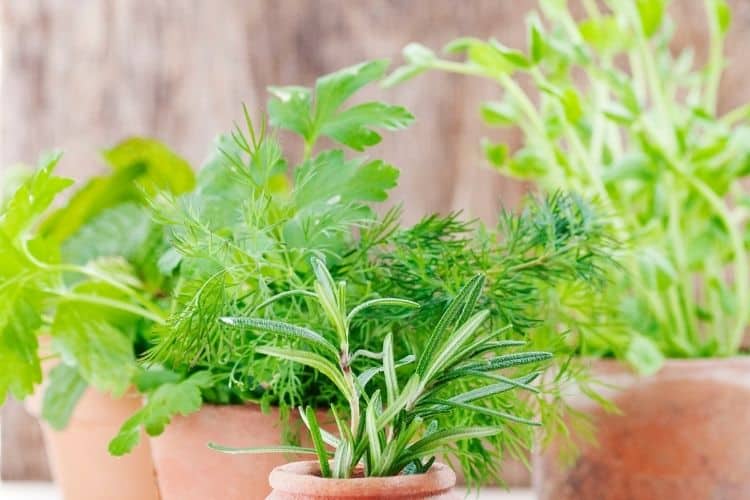
Vine Vegetables Need Special Care
Vine vegetables such as zucchini or cucumbers present an extra challenge if grown from a container. They will need some sort of sideways trellis or platform next to the container to support them as they grow.
Otherwise, they will outgrow the container and drop straight to the ground. This will put a great deal of stress on the main stem and make it difficult to harvest the produce.

Next Comes the Dirt for Your DIY Container Garden
Generally, a rich garden soil, such as those obtained from a garden center, should make up at least half of your growing medium. About 1/3 should be made up of peat moss, compost, fine sawdust, or some combination thereof.
Up to a quarter or so of your growing medium can be perlite, which helps improve drainage and keeps the soil from hardening.
This is by no means a hard and fast rule. You may want to experiment with different combinations in the first season to see what mixture works best for each vegetable you grow.
Fertilize Your Vegetables
It is also important to keep your vegetables fertilized with nutrients through the growing season. A rich general-purpose plant food, such as 15-30-15, or 10-10-10 should work well for most vegetables. Apply according to the instructions on the package.
Be sure to follow the directions for how much fertilizer to use – you don’t want to burn your plants.
Don’t Forget the Water
Probably the most important thing to remember when growing vegetables in containers is to keep them watered regularly. In the summer, this means watering them every day or setting up some kind of drip irrigation system that keeps water flowing throughout the day.
Grab yourself a good watering can and keep it handy.
If the leaves of your plants are droopy or browned at the edges, this is most likely a sign that they need more water.
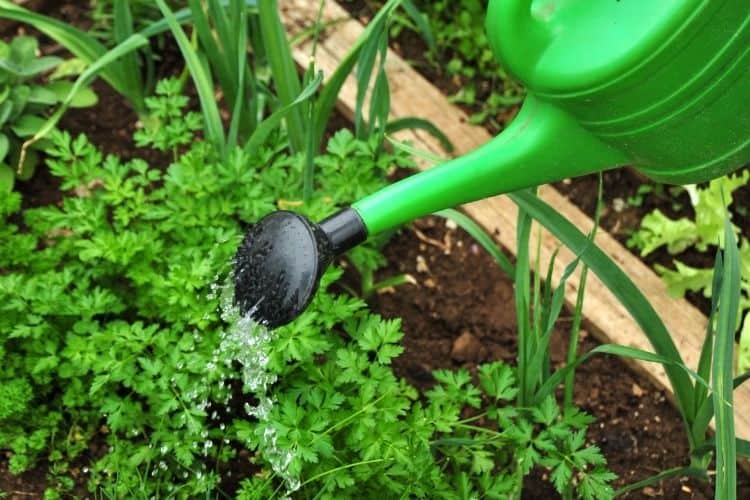
Practice Makes Perfect
Because there are so many variables that come with gardening, and container gardening, in particular, you may not achieve 100% success with everything you grow. This is no reason to become discouraged.
The key is to experiment and carefully observe the results, using different soil mixtures, fertilizer regimes, and plant varieties until you discover what works best for you and your climate.
Start with just a few the first time so you don’t get overwhelmed or burned out. A few peppers or tomatoes and herbs are great starters for your DIY Container Gardening ventures. Then branch out from there.
Check out the Perfect Vegetables for Growing in Pots for more ideas or these Tips for Growing Herbs.
And be sure to check out my favorite gardening supplies for DIY Container gardens below!
Container Gardening Supplies
Container Gardening Supplies to make your vegetables the best they can be!
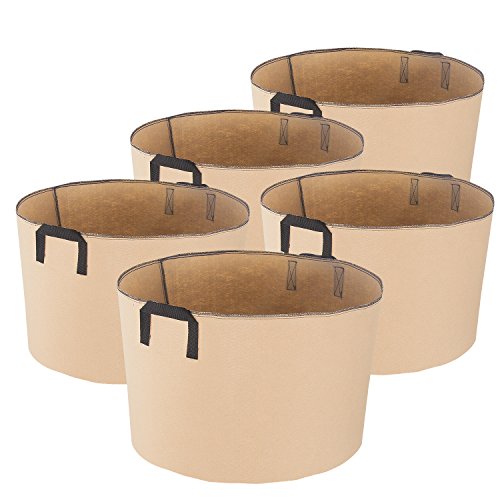
iPower 5-Pack 15 Gallon Grow Bags Nonwoven Fabric Pots for Garden and Planting
Not only are these made from breathable fabric, but they can be used year after year. They are easy to store and perfect for growing.
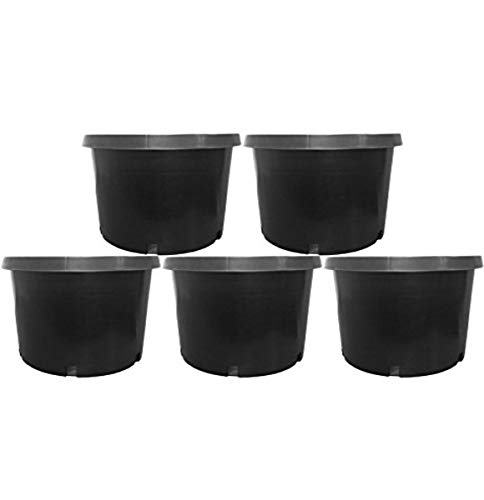
Pro Cal Premium Nursery Pot 10 Gal (5/pk)
If you'd rather go the route of a plastic pot, these are good and sturdy options for growing your vegetables.

Mininfa Natural Bamboo Trellis 24 Inches Tall, For Vegetables in Pots - 3 Pack
Certain vine veggies like cucumbers or zucchini need a support system like a trellis when growing. Add these to your pots for stability and upward growth.
Miracle-Gro Garden Soil Vegetables & Herbs 1.5 CF (2 pack)
Gardening soil formulated for vegetables and herbs.

12 Heirloom Vegetable Seeds for Planting Outdoor and Indoor - 100% Non-GMO
12 of the most popular vegetable seeds to get your DIY container garden started.
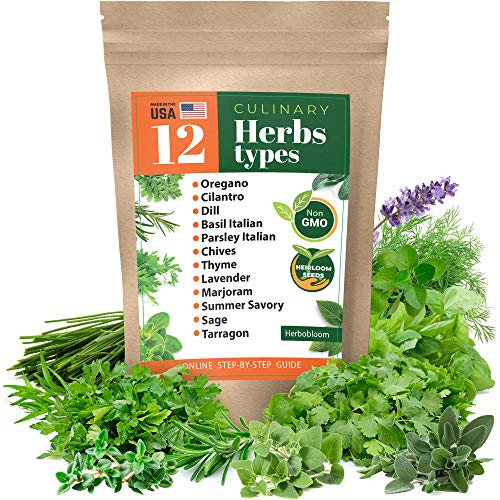
Herb Garden Seeds Collection - 12 Culinary Herb Seeds Pack - Non-GMO Heirloom Seeds for Planting
Herb gardens are one of the easiest ways to get started. Plant your faves and enhance your food all year!

Mkono Plastic Planters with Saucers, Indoor Set of 5 Gardening Pots with Drainage
These are perfect for growing herbs!

Miracle-Gro Water Soluble Plant Food Vegetables & Herbs 2 lb
Don't forget to feed your plants for best results.






